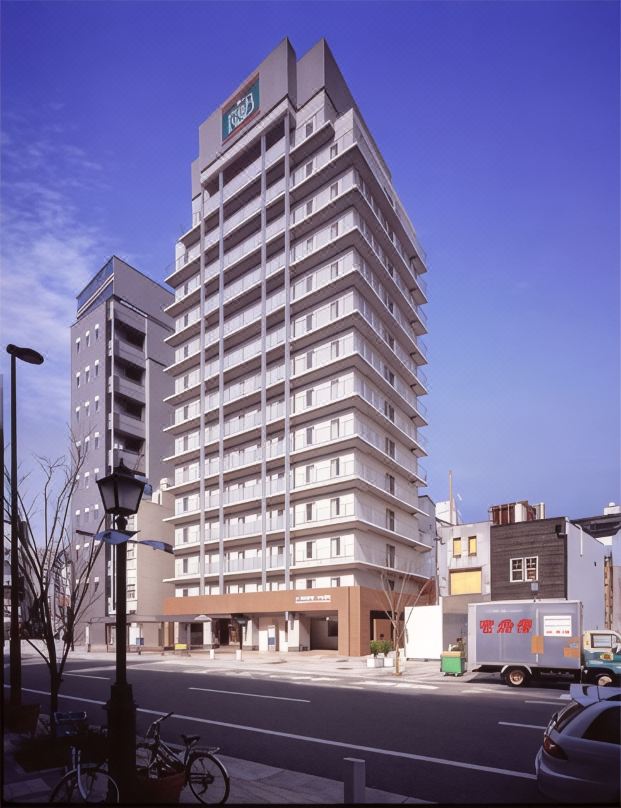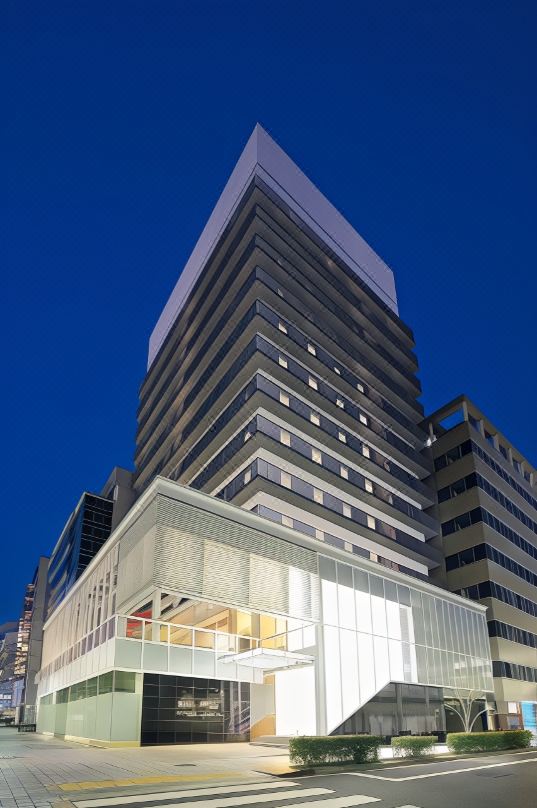[Hyogo Kobe] Experience the charm of Japanese architecture at “Takenaka Carpentry Tools Museum”!
![[Hyogo Kobe] Experience the charm of Japanese architecture at “Takenaka Carpentry Tools Museum”!](https://resources.matcha-jp.com/resize/720x2000/2023/07/27-141982.webp)
Takenaka Carpentry Tools Museum is located about a 3-minute walk from Shin-Kobe Station on the Shinkansen in Hyogo Prefecture, close to Mt. Rokko and Nunobiki Falls, which has been selected as one of Japan's top 100 waterfalls. It is attracting attention from architecture enthusiasts both domestically and internationally as a facility where you can experience the secrets of carpentry through seven sections such as ``Traditional Japanese Beauty.''
“Takenaka Carpentry Tools Museum” attracts attention from architecture enthusiasts around the world
![[Hyogo Kobe] Experience the charm of Japanese architecture at “Takenaka Carpentry Tools Museum”!](https://resources.matcha-jp.com/resize/720x2000/2023/07/27-141999.webp)
Takenaka Carpentry Tools Museum is located about a 3-minute walk from Shin-Kobe Station, the entrance Shinkansen from Japan's east and west, and close to Mt. Rokko and Nunobiki Falls. As you pass through the gate of the old mansion, you will find a calm atmosphere with an elegant one-story Japanese garden.
When it was rebuilt in 2014, it was hard to imagine what kind of structure it would become. At first glance, the Takenaka Carpentry Tools Museum looks like a one-story building, but you can feel the professionalism in the construction techniques that have transformed it into a two-story underground building. Please experience it for yourself, see it, and touch it.
Inheriting Japanese architectural techniques and dreams for children in seven permanent exhibitions
![[Hyogo Kobe] Experience the charm of Japanese architecture at “Takenaka Carpentry Tools Museum”!](https://resources.matcha-jp.com/resize/720x2000/2023/07/27-142001.webp)
At the Takenaka Carpentry Tools Museum, we offer ``Journey into History,'' ``Learning from the Master Carpentry,'' ``Tools and Handiwork,'' ``Travelling around the World,'' ``Traditional Japanese Beauty,'' ``The Brilliance of Master Craftsmen,'' and ``Making the Most of Wood.'' The exhibition is divided into seven corners, allowing you to feel the breadth and richness of the world surrounding carpentry tools.
1. A journey into history
![[Hyogo Kobe] Experience the charm of Japanese architecture at “Takenaka Carpentry Tools Museum”!](https://resources.matcha-jp.com/resize/720x2000/2023/08/02-142479.webp)
Japanese carpentry tools have evolved along with the development of wooden architecture. The history of tools from prehistoric times to modern times is explained in an interesting and easy-to-understand manner, with the history of architecture as a background, along with actual and reconstructed materials, impressive large-scale models, moving picture scrolls, and a wealth of video materials.
2. Learn from the master carpenter
![[Hyogo Kobe] Experience the charm of Japanese architecture at “Takenaka Carpentry Tools Museum”!](https://resources.matcha-jp.com/resize/720x2000/2023/07/27-142002.webp)
An impressive large-scale model of Toshodaiji Temple's Kondo Hall stands in the atrium on the second basement floor of the exhibition room. It seems that stability is ensured by transferring the weight of the eaves to the pillars through the three-step assembly carried out in three stages.
3. tools and handiwork
![[Hyogo Kobe] Experience the charm of Japanese architecture at “Takenaka Carpentry Tools Museum”!](https://resources.matcha-jp.com/resize/720x2000/2023/08/02-142486.webp)
One of the typical joints, Kanawatsugi (Kanawa Tsugi) and Okake Daisen Tsugi (Okake Daisen Tsugi), may look simple, but the wooden construction techniques that do not use nails or glue are detailed and durable. It's carpentry work. When you actually take apart the wooden model, it feels like a jigsaw puzzle.
4. around the world
![[Hyogo Kobe] Experience the charm of Japanese architecture at “Takenaka Carpentry Tools Museum”!](https://resources.matcha-jp.com/resize/720x2000/2023/07/27-142009.webp)
The exhibition room displays carpentry tools from Europe and China. The principles of using saws are different: Europeans and Chinese use the saw by pushing it, while Japan uses it by pulling it to cut wood. Compared to Japan and China, European building structures use hardwood, so many of the carpentry tools are also sturdier, and there are some aspects that differ from Japanese tools, which are more functional, such as carvings on the tools.
5. traditional Japanese beauty
![[Hyogo Kobe] Experience the charm of Japanese architecture at “Takenaka Carpentry Tools Museum”!](https://resources.matcha-jp.com/resize/720x2000/2023/07/27-142012.webp)
Earthen walls decorated with firelight windows that were introduced from China in the Middle Ages and were widely used in temple architecture. It is finished using a traditional method using Kyoto rust clay to intentionally create a spotted pattern that resembles a firefly. Here, the frame of the firelight window is also polished black plaster, and the background is polished red plaster mixed with Bengara, a new expression of polishing the scraped parts.
6. The brilliance of a master craftsman
![[Hyogo Kobe] Experience the charm of Japanese architecture at “Takenaka Carpentry Tools Museum”!](https://resources.matcha-jp.com/resize/720x2000/2023/08/02-142481.webp)
The plane blade "Shinunmu" created by the master craftsman Chiyozuru Korehide is on display. You can feel the passionate spirit from the engraved letters. In addition, the chisels left by the third generation, Zensaku, are embossed with a pattern called wood-graining, which conveys the craftsmanship that went into these tools. Currently, blacksmiths in places such as Miki City, Hyogo Prefecture are responsible for passing down the technology to future generations.
7. make use of trees
![[Hyogo Kobe] Experience the charm of Japanese architecture at “Takenaka Carpentry Tools Museum”!](https://resources.matcha-jp.com/resize/720x2000/2023/07/28-142077.webp)
It seems that the appearance, strength, price, and suitable part of the building depend on which part of the tree's trunk the wood is cut from. In front of the tree species samples, which are a collection of various types of wood, there is a hands-on exhibit of plane shavings made from each tree with a planer. It's not just forest bathing, it's forest aromatherapy. Please feel the scent of your choice with all five senses.
Touch, make, learn (woodworking experience event)
![[Hyogo Kobe] Experience the charm of Japanese architecture at “Takenaka Carpentry Tools Museum”!](https://resources.matcha-jp.com/resize/720x2000/2023/08/02-142484.webp)
If you try using a saw or a plane, the scent of wood will stimulate your sense of smell. If you watch demonstrations of foreign carpentry tools and Yariganna, you will be amazed at how the tools are used and their characteristics. There are various woodworking programs depending on the target age group, and if you take a course that interests you, you will fall in love with learning. For the latest information on event content, date and time, etc., please check the official website before applying.
Takenaka Carpentry Tools Museum Facility Information
・Facility name: Takenaka Carpentry Tools Museum
・Address: 7-5-1 Kumauchi-cho, Chuo-ku, Kobe, Hyogo Prefecture 651-0056
・TEL 078-242-0216 FAX 078-241-4713
・Opening hours: 9:30~16:30 (Admission until 16:00)
・Closed: Mondays (the next day if Monday is a holiday), New Year's holidays (December 29th to January 3rd)
Hotels near Takenaka Carpentry Tools Museum
[Official] Hyogo Prefecture tourism site HYOGO! navigation
The official website of Hyogo Tourism Headquarters, which provides tourist information for Hyogo Prefecture (Kobe, Himeji, Kinosaki, Awaji Island, etc.). There is a lot of recommended travel information, including special sightseeing spots such as Hyogo Prefecture's Japanese heritage sites and cycling, as well as model courses where you can enjoy hot spring culture and Japanese sake, so be sure to check it out!
Welcome to Hyogo Hyogo is a gateway to the Kansai region, which nurtures the blessed land that connects the Sea of Japan, the Chugoku Mountains, and the Seto Inland Sea, as well as the blessed climate. There are many spectacular views that will catch your eye, such as Himeji Castle, a World Heritage Site that was selected as one of the 100 Best Cherry Blossom Spots, and the panoramic night view from Mt. Rokko. The world-famous Kobe brand, KOBE BEEF, which is synonymous with Tajima beef, is one of Japan's leading beefs, and the sake rice ``Hyogo Yamada Nishiki'' is a gem that will surprise your tongue. Arima Onsen is a famous hot spring, and Kinosaki Onsen has appeared in many literary works. Surrounded by nature, you can relax your mind and body. You can come across memorable sounds such as the thunderous sounds of the whirlpools of Naruto on Awaji Island, and the dynamic sounds of the fireworks festivals held in various places in the summer. In the herb gardens and botanical gardens in the prefecture, you will be healed by the gentle and pleasant scent of herbs and flowers throughout the four seasons. Enjoy a new journey in Hyogo that stimulates the five senses of sight, taste, touch, hearing, and smell.
The contents on this page may partially contain automatic translation.





































![[2026] Top 5 Strawberry Picking Spots in Tokushima, Naruto| Farms and Access Guide for January to May](https://resources.matcha-jp.com/resize/720x2000/2025/03/06-227165.webp)


